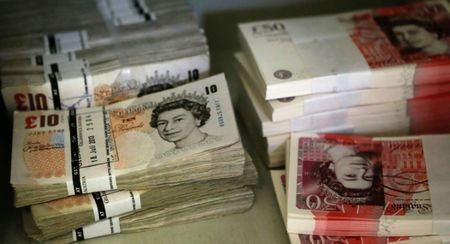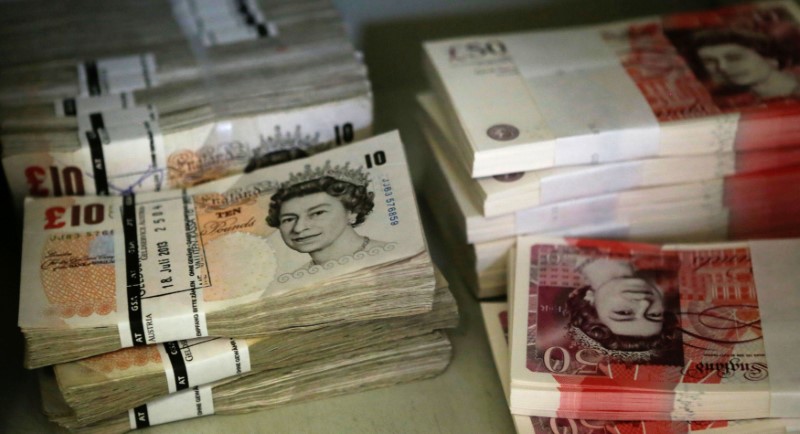Forex
Dollar steady, sterling falls after sharp drop in UK inflation


© Reuters.
Investing.com – The U.S. dollar edged higher in early European trade Wednesday, while sterling slumped as rapidly cooling inflation lifted expectations of Bank of England rate cuts next year.
At 03:05 ET (08:05 GMT), the Dollar Index, which tracks the greenback against a basket of six other currencies, traded 0.1% higher at 101.894, not far removed from its recent four-month low of 101.76.
Fed officials prop up the dollar
The dollar has been on the backfoot since last week’s policy-setting meeting of the U.S. Federal Reserve saw three rate cuts penciled in for 2024, although these losses have largely been contained as a series of Fed policymakers have attempted to rein in these dovish expectations.
This continued on Tuesday, with , president of the Atlanta Federal Reserve, saying there was no “urgency” now for cuts, while Richmond Fed President said whether the central bank can deliver on forecasts of rate cuts depends on how the economy performs.
U.S. economic data due on Wednesday centers around the housing market, in the form of November .
However, the , the Fed’s favorite measure of inflation, is due on Friday, and could show whether inflation has slowed enough for the Fed to begin easing policy next year.
Pound slumps after sharp fall in U.K. inflation
In Europe, fell 0.5% to 1.2662 after plunged in November, dropping to 3.9% from 4.6% in October – the lowest reading since September 2021.
The important core annual figure, which excludes volatile food and energy prices, also dropped by an unexpectedly large amount, falling to 5.1% from 5.7%.
The kept its main interest rate unchanged at its meeting last week, but stated rates would remain high for “an extended period.”
However, this reading has prompted traders to fully price in a rate cut by May 2024, causing the pound to fall sharply.
fell 0.2% to 1.0961, after also fell more than expected, dropping 0.5% on the month in November, an annual decline of 7.9%.
This reduction in factory gate prices is expected to feed into improving German consumer sentiment with the start of the new year, with the GfK institute’s forward-looking rising to -25.1 points heading into January from a revised -27.6 the month before.
The also kept interest rates unchanged last week, but investors are now looking for several rate cuts from the ECB next year with the first moves potentially in the first quarter.
Yen steadies after BOJ-inspired fall
Elsewhere, traded 0.2% lower at 143.57, with the yen stabilizing after tumbling sharply from near four-month highs in the prior session.
The yen’s weakness came as the maintained its ultra-dovish stance in its last meeting for the year, and signaled little intent to immediately begin tightening policy in 2024.
traded 0.1% higher at 7.1367, after the left its loan prime rate unchanged at record lows.
While the move was widely expected, it highlighted just how little headroom the PBOC had to keep policy loose and support an economic recovery in China.

 Forex3 years ago
Forex3 years agoForex Today: the dollar is gaining strength amid gloomy sentiment at the start of the Fed’s week

 Forex3 years ago
Forex3 years agoUnbiased review of Pocket Option broker

 Forex3 years ago
Forex3 years agoDollar to pound sterling exchange rate today: Pound plummeted to its lowest since 1985

 Forex3 years ago
Forex3 years agoHow is the Australian dollar doing today?

 Cryptocurrency3 years ago
Cryptocurrency3 years agoWhat happened in the crypto market – current events today

 World3 years ago
World3 years agoWhy are modern video games an art form?

 Commodities3 years ago
Commodities3 years agoCopper continues to fall in price on expectations of lower demand in China

 Economy3 years ago
Economy3 years agoCrude oil tankers double in price due to EU anti-Russian sanctions





















